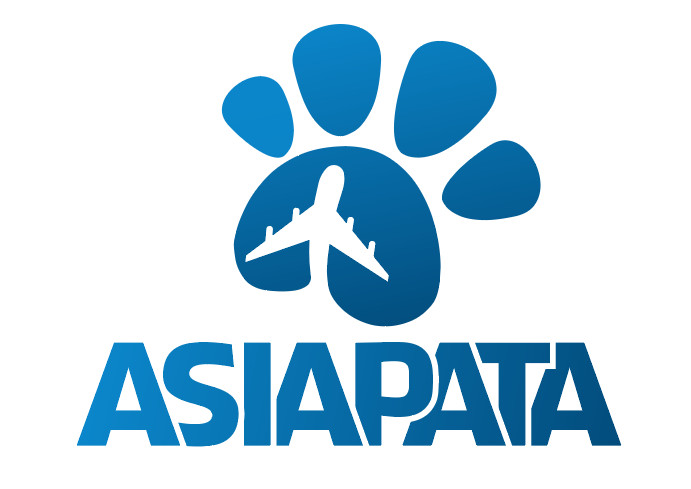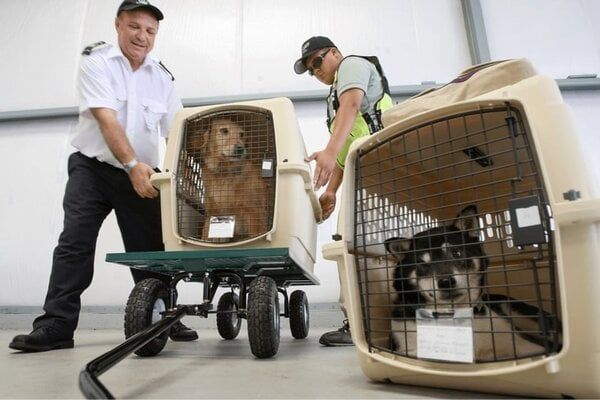A Complete Guide to International Multi-Leg Pet Transport (Transit Procedures)
Transporting pets internationally can be complicated, especially when the journey involves multiple stops or transfers between airlines. Each country and airline has its own transit regulations, health documentation requirements, and import–export rules. This comprehensive guide will help you understand the essential procedures for international multi-leg pet transport, ensuring a safe and smooth journey for your furry companion.
1. What Is Multi-Leg Pet Transport?
Multi-leg or transit pet transport refers to the process of moving your pet across more than one flight or country before reaching the final destination. For example, a pet traveling from Vietnam to Canada via Singapore or Japan is considered a multi-leg journey.
Such transit routes are common when there are no direct flights from the country of origin to the destination or when specific airlines are preferred for animal transport due to their handling standards.
Multi-leg transportation requires precise coordination between airlines, transit airports, and veterinary authorities to guarantee that pets remain safe, comfortable, and compliant with international regulations throughout the trip.
2. Common Challenges in Multi-Leg Pet Transport
While multi-leg travel helps connect distant destinations, it also introduces several logistical challenges that owners must prepare for:
-
Different country regulations: Each transit country may have unique import or quarantine requirements, even for pets that do not leave the airport.
-
Limited transit facilities: Not all airports have designated animal care or holding areas suitable for pets.
-
Airline coordination: When connecting flights involve multiple airlines, each carrier’s live animal policy must be verified in advance.
-
Temperature restrictions: Some airlines impose embargoes during extreme heat or cold, affecting the timing of connecting flights.
-
Document verification: Inconsistent paperwork or expired health certificates can lead to delays or denial of boarding at transit points.
Proper planning and professional guidance are essential to minimize these risks and keep the process stress-free for both pets and owners.

3. Step-by-Step Guide to International Transit Procedures
Step 1: Confirm Airline Pet Policies
Before booking tickets, check each airline’s live animal transport policy, crate requirements, and approved transit routes. Some airlines only accept pets on specific aircraft types or have breed restrictions (e.g., for brachycephalic breeds).
It’s best to choose airlines that have established interline agreements, which allow smoother transfer of animals between flights.
Step 2: Understand Transit Country Rules
Even if your pet will not exit the airport, certain countries (like Singapore, Japan, or the UK) require transit permits or prior approval from veterinary authorities.
Research each country’s regulations well in advance, as these permits can take several weeks to process.
Step 3: Prepare Health Certificates and Documents
Essential documents include:
-
An international health certificate issued by an authorized veterinarian.
-
Vaccination records (especially rabies and other core vaccines).
-
Microchip certificate that complies with ISO 11784/11785 standards.
-
Import/export permit (if applicable).
-
Transit approval for countries requiring it.
Ensure that all documents are in English or officially translated, and the dates of vaccination and certification meet the entry requirements of both the destination and transit countries.
Step 4: Choose an IATA-Compliant Crate
Your pet’s travel crate must meet IATA Live Animals Regulations (LAR) standards:
-
Enough space for the pet to stand, turn around, and lie comfortably.
-
Secure metal doors with ventilation on at least three sides.
-
Proper labeling with “Live Animals” and owner contact details.
The crate should be tested before the journey to help your pet acclimate and reduce stress during transit.
Step 5: Book Flights and Notify Airlines
When confirming your itinerary, inform the airline that you are shipping a live animal. Airlines often have limited pet cargo capacity, so early booking (at least 2–3 weeks in advance) is highly recommended.
Request a single airway bill (AWB) for the entire journey if possible, to streamline customs and handling procedures at transit points.
Step 6: Monitor Transit Handling
At major airports such as Singapore Changi, Doha Hamad, Frankfurt, or Narita, pets are transferred between flights by specialized animal handling centers. These facilities provide rest, feeding, and temperature-controlled environments.
If the transit time exceeds 6–8 hours, professional pet care may be arranged to ensure the animal’s welfare.
Step 7: Customs Clearance at Final Destination
Upon arrival, customs and veterinary officials will inspect all documentation, microchip, and crate condition. Some countries require a short quarantine period, while others release the pet immediately after clearance.
4. Tips for a Smooth Multi-Leg Pet Journey
-
Avoid tight layovers: Allow at least 4–6 hours between connecting flights to accommodate potential delays.
-
Label everything: Attach copies of documents to the crate in a waterproof pouch.
-
Feed appropriately: Avoid feeding large meals within 4 hours of departure; provide water and absorbent bedding instead.
-
Stay updated: Keep track of flight status and weather conditions, as these may affect pet acceptance.
-
Use a professional pet transport service: Companies like ASIAPATA specialize in coordinating multi-leg routes, handling paperwork, and ensuring pet safety throughout the journey.
5. Why Choose ASIAPATA for Multi-Leg Pet Transport
ASIAPATA is a trusted partner in international pet relocation, with extensive experience managing complex transit routes across Asia, Europe, and North America. Our team works directly with airlines, veterinary authorities, and customs offices to provide:
-
End-to-end documentation support
-
Safe and comfortable pet handling during transit
-
Transit permit applications and airline coordination
-
Real-time shipment tracking and owner updates
With ASIAPATA, your pet’s journey — no matter how many stops it takes — is managed with care, professionalism, and full compliance with international standards.
Conclusion
Multi-leg international pet transport can be complex, but with proper preparation, attention to detail, and expert support, your beloved companion can travel safely across borders. Understanding each transit step — from airline coordination to health documentation — is key to a successful relocation.
For personalized consultation and route planning, contact ASIAPATA today.
We ensure your pet’s journey is not only compliant but also comfortable and stress-free — wherever their destination may be.
Read more:














